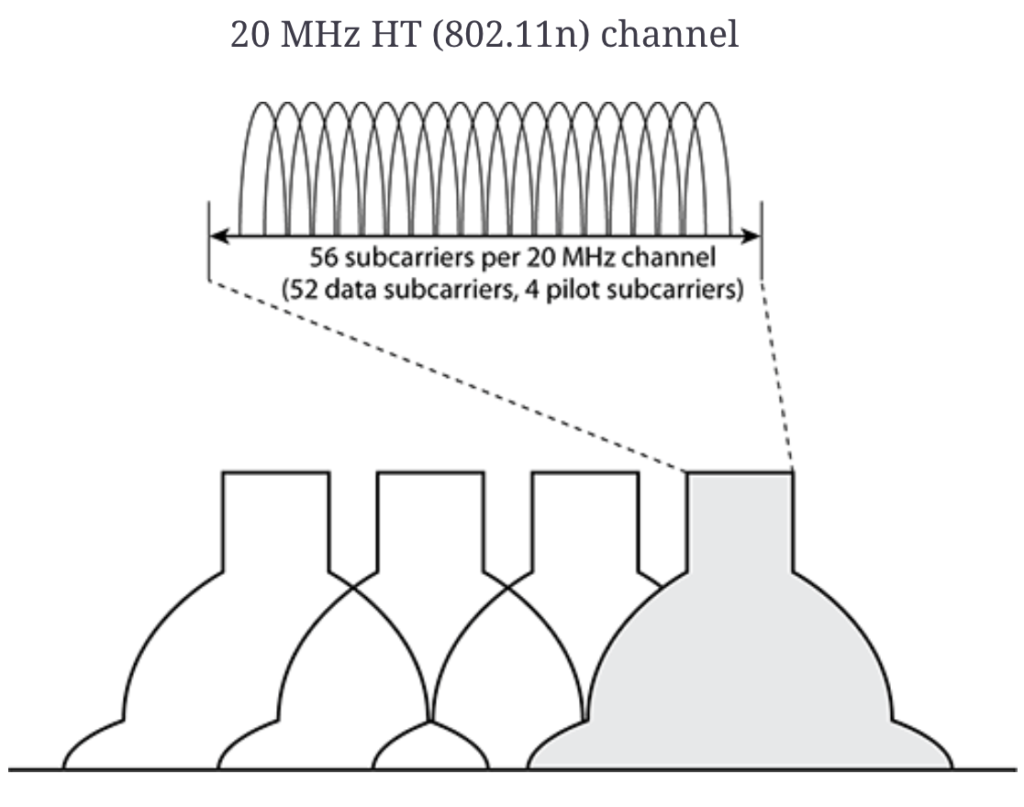802.11n is basically to improve the Performance and throughput of 802.11a/g standards.
PHY(Physical) Layer enhancement took place in 802.11n to increase the throughput and reliability of sending data over the channel.
Transmit Beamforming (TxBF) : Helps to transmit data using multiple antennae and helps the transmit antenna to choose the best path of transmitting data, this can help to boost throughput (Here Transmit Beamforming uses poilet frame to identify the best frame)
Spatial Multiplexing (SM) :
MIMO (Multiple Input and Multiple Output) radios transmit multiple radio signals at the same time to increase the throughput and these unique signal is called as “Spatial Multiplexing”.
Multipaths can result in the natural broadening of the waves in two or more paths at a receiving antenna at the same time. Natual broadening of waves results in reflection, scattering, diffraction, and refraction hence causing loss of amplitude and data corruption.
802.11n MIMO systems, take advantage of multipath i.e individual radio signals are transmitted by a unique radio and antenna of the MIMO. Each unique signal is known as a spatial stream and each stream will also travel through a different path with a half-wavelength space between the multiple transmitting antennas. When multiple streams follow different paths to the receiver with space between the transmitting antennas then it is called spatial diversity.
Transmitting multiple streams of unique data using spatial diversity is known as spatial multiplexing or spatial diversity multiplexing.
In the below figure, we have observed that 3×3 MIMO AP transmits three independent streams of unique data to a 3×3 MIMO client. It theoretically helps to triple the network throughput.

Space-Time Block Coding (STBC) :
STBC helps to transfer different copies of the data stream from different antennas and helps to increase the signal quality with an increase in range.
Antenna Selection (ASEL) dynamically helps to increase signal diversity
HT(High Throughput) Channels
HT(High Throughput) radios use 20 MHz OFDM channels and 40 MHz channels. An increase in frequency bandwidth provided by the OFDM channels also eventually increases throughput.
20 MHz Non-HT and HT Channels
20 MHz OFDM channel contains 62 subcarriers and each subcarrier is 312.5 KHz wide. In 62 subcarriers, 10 guard band subcarriers, 48 are data subcarriers and 4 subcarriers are used as pilot subcarriers for tx and rx.

an HT 20 MHz OFDM channel has 56 subcarriers. 52 are data subcarriers, while 4 subcarriers are used as pilot subcarriers for tx and rx

40 MHz Channels
The 40 MHz HT channels use 114 OFDM subcarriers. 108 are data subcarriers and 6 are the pilot for dynamic calibration between tx and rx. 40 MHz channel doubles the frequency bandwidth available for data transmissions.

Channel Bonding:
Channel bonding is the technique used where two 20MHz channels combine to form a 40MHZ channel. Where the primary channel is used for management frames and the primary + secondary channel is used for data transfer. In the management frame we can see the Primary channel and A positive or negative offset indicates the secondary channel.

Modulation and Coding Scheme
In 802.11n data rates are defined with a modulation and coding scheme (MCS).
Below is the MCS for 20MHz channel for 4 spatial streams

Below is the MCS for the 40MHz channel for 1 spatial stream

Below is the MCS for 40MHz channel for 4 spatial streams

HT PHY
When PHY header is added to the MPDU then it is called as PLCP Protocol Data Unit (PPDU). Preambles are added to make sure the transmit and receive physical layers are in sync .
PHY header has a signal field to use to inform the duration of time for sending or receiving the 802.11n frame. 802.11n uses three PPDUs with different preambles. The first one is legacy preambles and the other two are HT Preamble.

HT Mixed
In HT mixed transmissions can occur in both 20 MHz and 40 MHz channels. When a 40 MHz channel is used, all broadcast traffic must be sent on a legacy 20 MHz channel so that legacy devices can update their NAV.
HT Greenfield
HT Greenfield allows 802.11n devices to transmit using both 20 MHz and 40 MHz channels and HT Greenfield will be enabled when 802.11n devices communicate with each other at high data rates.
References:
learning.oreilly.com
cwap
Note: All diagrams or figure are taken from references